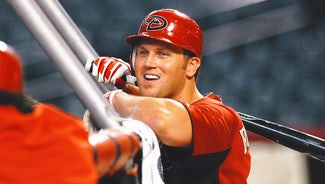
Should pitching-rich Phils trade Hamels?
By now, we all know to put nothing past Phillies general manager Ruben Amaro Jr.
Trading left-hander Cole Hamels would qualify as a surprise — but no greater a surprise than trading lefty Cliff Lee and acquiring righty Roy Halladay in December 2009, or signing Lee back last offseason.
Trading Lee was probably Amaro’s most criticized move — he got too little back from the Mariners and blew a chance to pair Lee with Halladay with the Phillies coming off a World Series appearance.
Trading Hamels, if Amaro did this right, would be more tolerable, though many in baseball are highly skeptical that the Phillies would even attempt such a move.
When have we heard that before?
The goal for now, Amaro said Tuesday, is to sign Hamels long-term. The Phillies likely would prefer such a deal to be similar to the five-year, $85 million extension that right-hander Jered Weaver signed with the Angels in August. But Hamels, who is a year away from free agency, could approach the $24 million-per-year range that Lee and CC Sabathia commanded on the open market.
That would make Hamels the Phillies’ fourth player with a $20 million-plus salary; Lee, Halladay and first baseman Ryan Howard already are at that level. Hamels, though, is the youngest of the Phillies’ three aces — he turns 28 on Dec. 27.
While his situation is in many ways similar to Lee’s at the end of the ’09 season, there are some significant differences, too.
The main parallel is that Lee also was one year away from free agency. He rejected a contract offer from the Phillies early that December. Amaro traded him about 10 days later, acquiring Halladay from the Blue Jays in a separate deal.
Now for the differences.
One is that Lee was under contract at a below-market salary of $9 million in 2010, while Hamels in his final year of arbitration could earn $14 million — a number that would make him less attractive in a trade.
The Brewers were in a similar position last offseason with first baseman Prince Fielder, who avoided arbitration by agreeing to a one-year, $15.5 million contract. No team was willing to assume Fielder’s salary and part with top prospects in a deal.
Another difference between the Lee and Hamels situations is timing. Amaro, who is trying to re-sign shortstop Jimmy Rollins and add another hitter, does not plan to force the issue with Hamels the way he did with Lee.
“We have some other fish to fry right now, some other pieces of the club we need to take care of,” Amaro said.
“I’ve already expressed that to Cole and his agent (John Boggs). They understand it. We have until next October to do a deal with Cole. It’s not a pressing need, but it is something we are absolutely on top of.”
The Phillies, then, might not talk contract with Hamels before January — and pitching-hungry teams such as the Yankees and Red Sox probably will not wait that long to fill their needs.
Still, Amaro is not about to broadcast his intentions if he is even thinking about trading Hamels. He easily could operate on several fronts at once, quietly negotiating with Boggs while conducting other offseason business.
If he wants to trade Hamels, here’s how it could work:
Amaro would sign a free-agent starter such as left-hander C.J. Wilson or left-hander Mark Buehrle for less than it would take to keep Hamels long-term.
Then he would trade Hamels to a high-revenue team such as the Yankees, who would part with the necessary young talent to make such a deal compelling.
Would the Phillies, for example, take left-hander Manny Banuelos or righty Dellin Betances plus shortstop Eduardo Nunez for Hamels? They certainly would be tempted.
Would the Yankees make such a deal? Not necessarily, considering that they would get Hamels at a high salary for only one year — and generally do not sign players to extensions before they reach free agency.
Again, the Phillies show no inclination of even putting such a process in motion; though they did meet Wednesday with the agent for Wilson and Roy Oswalt.
Amaro also seems to understand that he has a good thing going, even if he is assured only of keeping Hamels for one more season.
“We know how important it is to have those kinds of guys at the top of our rotation, now and for the long-term,” Amaro said.
“You look in the past. You look at the teams that had success for long periods of time. A lot of the time, it was because of their starters.
“Look at Atlanta. They had those three, four or five guys every year. That’s why they won 14 (division titles) in a row. That’s still the goal, to keep Cole around for long after 2012.”
If at any point Amaro believes he cannot do that, look out. If there is one thing we’ve learned over the past two years, it’s that he’s capable of virtually anything.











































































































































